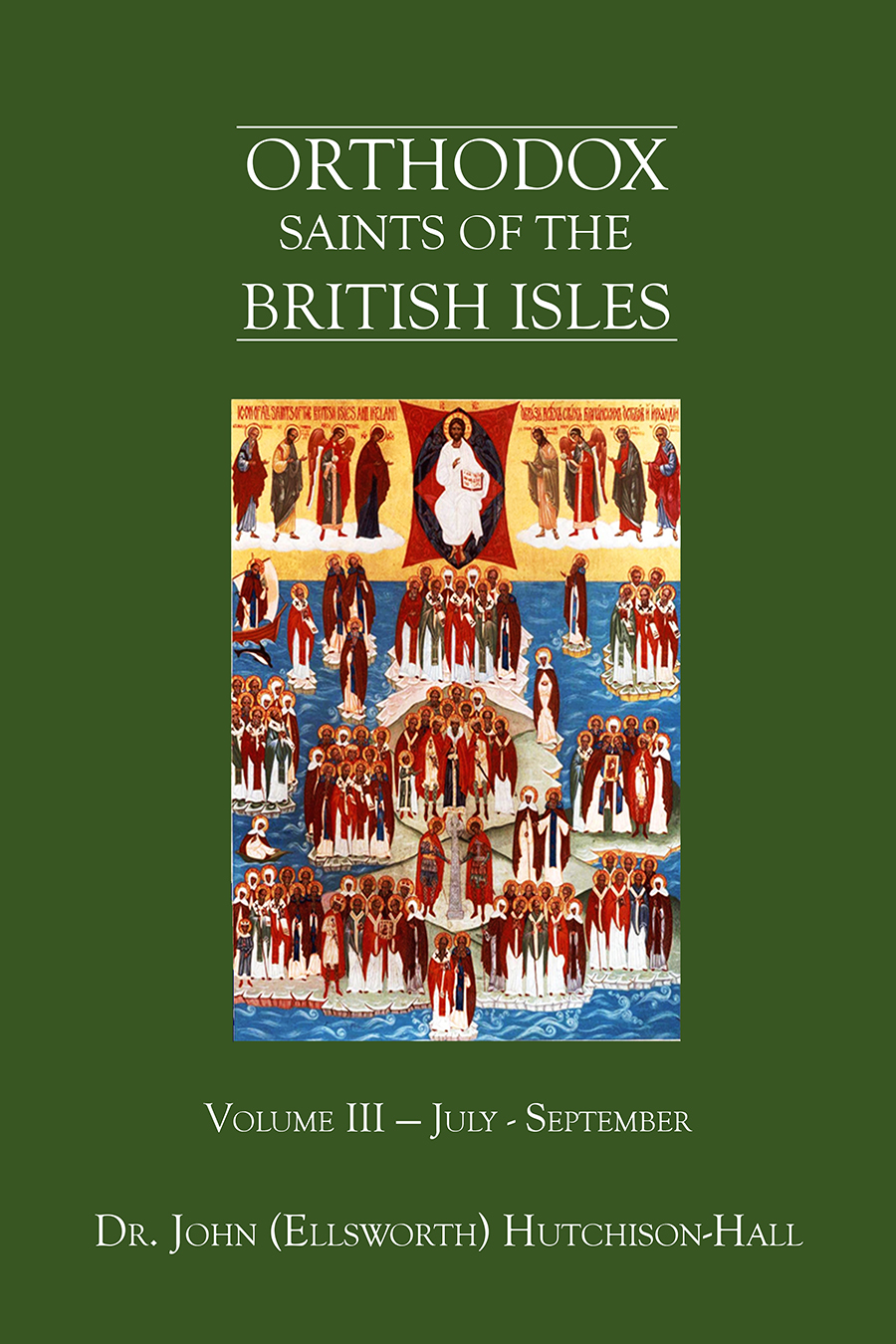
Orthodox Saints of the Pre-Schism
See of Rome
4th August (NS) — 22nd July (OS) 2023
DABIUS (DAVIUS), (Date Uncertain), according to English Roman Catholic priest and renowned hagiographer Fr. Alban Butler (†1773) St. Dabius was an Irish priest who worked in Scotland, where there are several churches dedicated to him. It is possible he is the same saint as St. Movean of Inis-Coosery (vide infra), a disciple of St. Patrick of Ireland (17th March).
MENELEUS (MÉNÉLÉ, MAUVIER) of MENAT, a monk at Carméry in Auvergne (central France). St. Meneleus later restored the Abbey of Menat near present-day Clermont-Ferrand in central France. St. Meneleus reposed circa 720.
MOVEAN (BITEUS) of INIS-COOSERY, (Date Uncertain), a disciple of St. Patrick of Ireland (17th March) and Abbot of Inis-Coosery, Co. Down, Ireland. He later went to Scotland where he lived as a hermit in Perthshire. It is possible he is the same saint as St. Dabius (vide supra).
PANCHARIUS of BESANÇON, an early Bishop of Besançon (eastern France) who had to contend with a great deal of persecution by the Arian Emperor Constantius II (r. 337–361). St. Pancharius reposed circa 356.
WANDRILLE (WANDREGISILUS, VANDRILLE) of FONTENELLE, a courtier in the Merovingian Court of Dagobert I, King of Neustria and Burgundy (France) (r. 629–639), who, following a pilgrimage to Rome, left the world to live as a monk. After a period of time, during which he was ordained to the priesthood, St. Wandrille founded, and served as the first Abbot of, the Abbey of St. Peter / abbaye Saint-Pierre (later the Abbey of St. Wandrille / abbaye Saint-Wandrille) in Fontenelle, Normandy (northern France). St. Wandrille reposed in 668.
Get your copy of Orthodox Saints of the British Isles today.
Available at Amazon or your favourite e-bookstore.
AGABIUS of VERONA, a third century Bishop of Verona (northern Italy), of whom, ecclesiastical historian Caesar Cardinal Baronius (†1607) said was “Eminent for his love of God, for his gentle manners and for his liberality towards the poor”. No further details of his life are extant.
CRESCENTIO of ROME, (Date Unknown), martyred on the Via Tiburtina in Rome. No further information is extant.
EPIPHANES and ISIDORE of BESANÇON, (Date Unknown), two early martyrs who were venerated at the Cathedral of Besançon in France until the French Revolution, when ostensibly their relics and all traces of their lives were destroyed. Whilst it is possible there was information of their lives up to then, nothing has survived to this day.
EUPHRONIUS of TOURS, the eighteenth Bishop of Tours (west-central France) from 555 until his repose in 573. He was succeeded by St. Gregory of Tours (17th November). St Euphronius played an important role in the rebuilding of Tours after it had been severely destroyed by fire.
HYACINTH of ROME, (Date Unknown), martyred on the Via Tiburtina in Rome. No further information is extant.
JUSTIN of ROME, (Date Unknown), martyred on the Via Tiburtina in Rome. No further information is extant.
LUA (LUGID, MOLUA) of LIMERICK, A disciple of St. Comgall of Bangor (10th May), St. Lua spent the early part of his monastic life at the great monastery and school of Bangor Abbey in Co. Down, Ulster. He was acclaimed for his great asceticism and the Rule he wrote for his monks was one of the most austere of its kind. There are many legends about St. Lua of doubtful veracity. It is said he was the founder (some legends say builder) of one hundred and twenty churches or monasteries, and that, even as a child, he was a wonderworker. Miracles attributed to him include St. Lua’s cure of his father’s cancerous foot. St. Lua reposed in the early part of the seventh century, various years from 609 to 622 have been given. In Scotland, his feast was traditionally kept on 25th June.
PEREGRINUS, MACERATUS, and VIVENTIUS, (Sixth Century), according to tradition, most likely apocryphal, they were brothers from Spain, who died in France whilst attempting to rescue their sister from some unknown captivity.
PERPETUA, a Roman matron who was baptised by the Apostle Peter (29th June), and then who converted her husband and son. St. Perpetua reposed circa 80, most likely in Rome, but her relics have been enshrined in Milan for centuries.
PROTASIUS of COLOGNE, (Date Unknown), a martyr who was honoured in Cologne in present-day Germany, about whom nothing further is known.
SITHNEY (SEZNI), a native of Britain, St. Sithney went to Guic-Sezni in Brittany, where he founded a monastery. He is also the patron saint of Sithney in Cornwall. St. Sithney reposed circa 529 and his relics were enshrined at Guic-Sezni.
TERTULLINUS of ROME, a priest who was martyred in Rome the reign of Emperor Valerian (r. 253–260). According to tradition his martyrdom in 257 was was a mere two days after his ordination.
Prior to the Schism the Patriarchate of Rome was Orthodox, and fully in communion with the Orthodox Church. As Saint John of Shanghai and San Francisco +1966 said “The West was Orthodox for a thousand years, and her venerable Liturgy is far older than any of her heresies”.
Details of British Saints excerpted from Orthodox Saints of the British Isles.
Details of continental saints from these sources.
In many cases there are several spelling versions of the names of saints from the British Isles. I use the Oxford Dictionary of National Biography version as the primary version with the more prevalent version in parenthesis e.g. Ceadda (Chad) of Lichfield.

